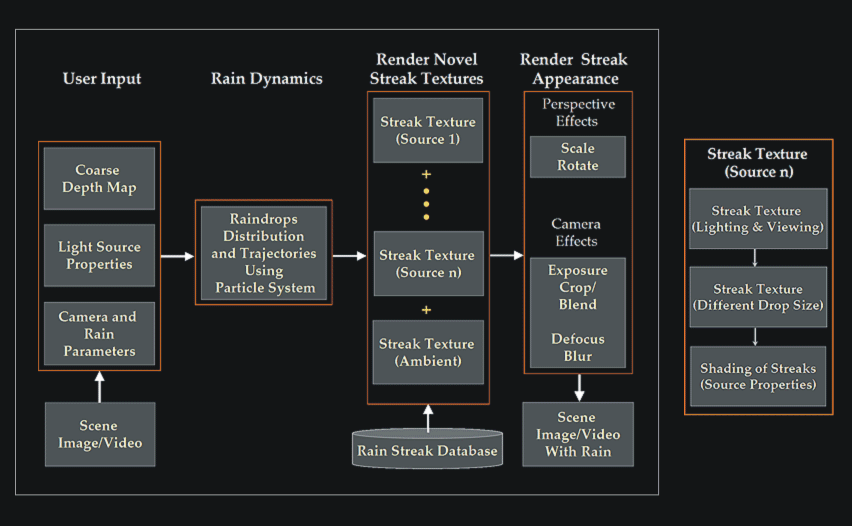Rain Rendering Pipeline

|
| The figure above show the main steps of image-based algorithm used for inserting rain in images and videos. The user
provides an image or a video of the scene, a coarse depth map of the
scene, the properties of the light sources, and the camera and rain
parameters. The algorithm uses a particle system for creating the rain
distribution and the drop trajectories. Then, it uses textures from our
rain streak database to render novel rain streaks. Novel streaks are
rendered for each light source. The box on the right shows details of
the steps involved for each source. These steps account for the effects
of drop size, distances from light sources and the camera, and the
properties of the light source. The streak textures due to individual
light sources and the ambient light texture are added to obtain the
final streak texture. These final textures are then scaled and rotated
to account for perspective effects and blurred and cropped to account
for camera defocus and exposure time. |
|